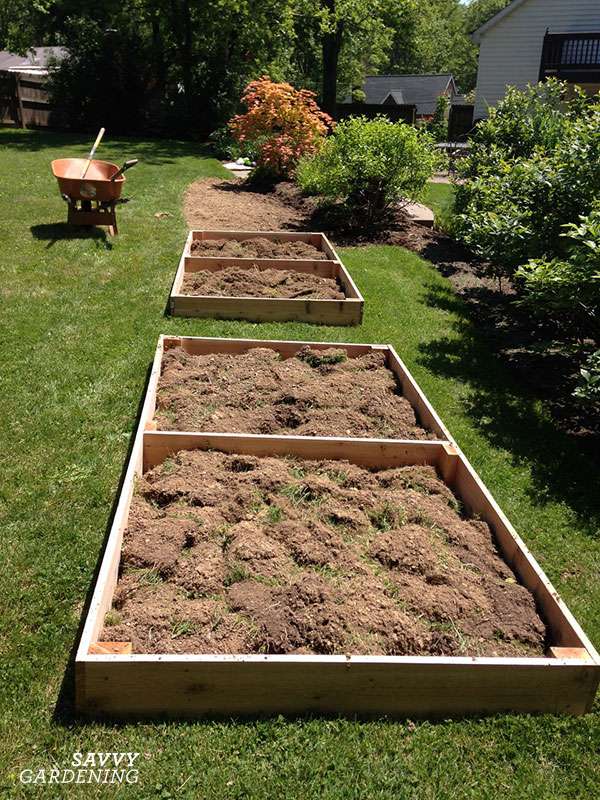In this article, we’ll talk about the importance of choosing the right soil for raised bed gardening. We’ll explore the various factors to consider when selecting soil for your raised beds, such as drainage, nutrients, and pH levels. Additionally, we’ll discuss different types of soil amendments that can improve the quality of your raised bed soil. By the end of this article, you’ll have a good understanding of how to select the perfect soil for your raised bed gardens. So, what do you put under raised bed soil? Let’s find out!
Choosing the Right Soil for Raised Bed Gardening
Raised bed gardening has gained popularity among gardeners for its numerous benefits. By raising the gardening area above ground level, it allows for better control over soil conditions, improved drainage, and efficient use of space. One crucial aspect of successful raised bed gardening is choosing the right soil. In this article, we will discuss the importance of soil in raised bed gardening and explore the factors to consider when selecting soil for your raised beds. We will also delve into different types of soil suitable for raised bed gardening and highlight the role of organic matter. Additionally, we will provide tips on testing and preparing the soil, controlling weeds and pests, managing irrigation and water needs, as well as maintaining and caring for your raised beds. So let’s dig in and get your raised bed gardens off to a great start!
Understanding the Importance of Soil in Raised Bed Gardening
Soil is the foundation of any successful garden and plays a crucial role in raised bed gardening. The soil in your raised beds directly impacts plant growth, nutrient availability, water retention, and overall productivity. Since raised bed gardening involves creating a contained growing area, the quality of the soil within it becomes even more critical. With the right soil, you can provide the optimal environment for your plants to thrive.
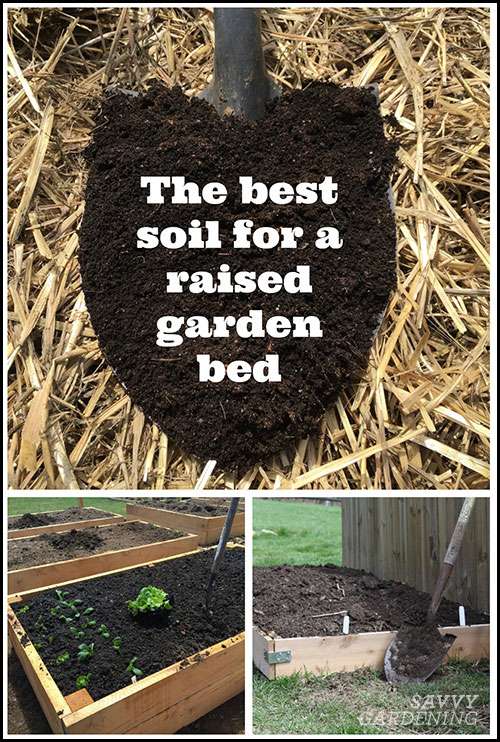
Benefits of Using the Right Soil for Raised Bed Gardening
Using the right soil in your raised beds offers numerous benefits. Firstly, it allows for better root development, as the loose and well-draining soil provides the necessary aeration and space for roots to grow. This, in turn, promotes healthier and more robust plants. Additionally, the right soil composition ensures adequate water retention without waterlogging, preventing root rot and other moisture-related issues. Moreover, by choosing the appropriate soil, you can meet the specific nutrient requirements of different plants, resulting in better yields and healthier crops.
Factors to Consider when Choosing Soil for Raised Bed Gardening
Several factors come into play when selecting soil for raised bed gardening. These factors include climate and region, the type of plants you are growing, drainage and water retention capabilities, as well as nutrient requirements. Understanding these factors will help you make an informed decision about the type of soil that best suits your raised bed gardening needs.
Climate and Region
Consider the climate and region where your garden is located. Different areas have varying soil characteristics, such as levels of clay, sand, and silt. Knowing the soil composition in your region can help you choose the right soil amendments to improve drainage, water retention, and nutrient availability.
Type of Plants
Different plants have varying preferences when it comes to soil composition. Some plants, like vegetables, require fertile and well-drained soil, while others, like succulents, prefer sandy and fast-draining soil. Understanding the specific needs of the plants you are growing will guide you in choosing the most suitable soil.
Drainage and Water Retention
The ability of the soil to drain excess water and retain moisture is crucial for plant health. Well-drained soil prevents waterlogging, which can lead to root rot and other issues. On the other hand, the soil should also retain enough moisture to ensure plants have access to water between watering sessions. Finding the right balance is key.
Nutrient Requirements
Different plants have different nutrient requirements. Some plants are heavy feeders and require nutrient-rich soil, while others have specific preferences for certain nutrients. Understanding the nutrient needs of your plants will help you choose soil that provides the necessary nutrients or allows for easy supplementation.
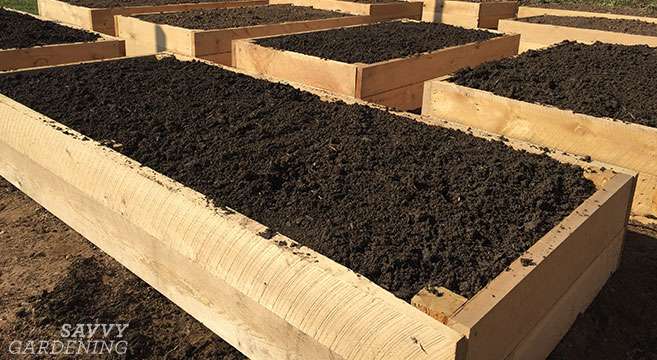
Types of Soil Suitable for Raised Bed Gardening
When it comes to choosing soil for raised bed gardening, several options are available. Each type of soil has its own characteristics and benefits. Let’s explore a few popular choices:
Topsoil
Topsoil is the uppermost layer of soil, rich in organic matter and nutrients. It is an excellent choice for raised bed gardening as it provides a fertile base for your plants. However, it is important to ensure that the topsoil is of good quality and free from contaminants.
Compost
Compost is a valuable soil amendment made from decomposed organic materials. It improves soil structure, enhances drainage, enriches the soil with nutrients, and promotes beneficial microbial activity. Incorporating compost into your raised bed soil can greatly benefit your plants.
Coco Coir
Coco coir, also known as coconut coir, is a sustainable and environmentally friendly option for raised bed gardening. It is made from the fibrous material found in coconut husks. Coco coir retains water well and provides good aeration for plant roots.
Peat Moss
Peat moss is another popular soil amendment that improves water retention and helps loosen heavy soils. It is often mixed with other soil types to create a balanced growing medium for raised beds. However, it is important to consider the environmental impact of peat mining and explore sustainable alternatives.
Perlite and Vermiculite
Perlite and vermiculite are lightweight materials that improve soil aeration and drainage. They are often used as additives to improve the texture and structure of the soil. These materials are particularly beneficial for raised bed gardening as they help prevent soil compaction.
Importance of Organic Matter in Raised Bed Gardening
Organic matter plays a vital role in raised bed gardening. It provides essential nutrients, improves soil structure, enhances water retention, promotes beneficial microbial activity, and increases overall fertility. Understanding the role of organic matter and incorporating it into your raised bed soil can greatly benefit your plants.
Understanding the Role of Organic Matter in Soil
Organic matter refers to any material derived from living organisms or their remains. It includes materials such as compost, decaying leaves, manure, grass clippings, and kitchen scraps. When incorporated into the soil, organic matter improves its physical, chemical, and biological properties.
Benefits of Incorporating Organic Matter in Raised Bed Soil
Incorporating organic matter into your raised bed soil offers numerous benefits. Firstly, it improves soil structure, making it easier for roots to penetrate and access nutrients. It also enhances water retention and drainage, preventing both waterlogging and drought stress. Furthermore, organic matter serves as a slow-release fertilizer, providing a steady supply of nutrients to your plants.
Different Sources of Organic Matter for Raised Bed Gardening
There are several sources of organic matter that you can incorporate into your raised bed soil. Compost is one of the most commonly used sources, as it is readily available and provides a wide range of nutrients. You can also use well-rotted manure, leaf mold, grass clippings, and vegetable kitchen scraps. These organic materials increase the nutrient content of the soil and promote healthy plant growth.
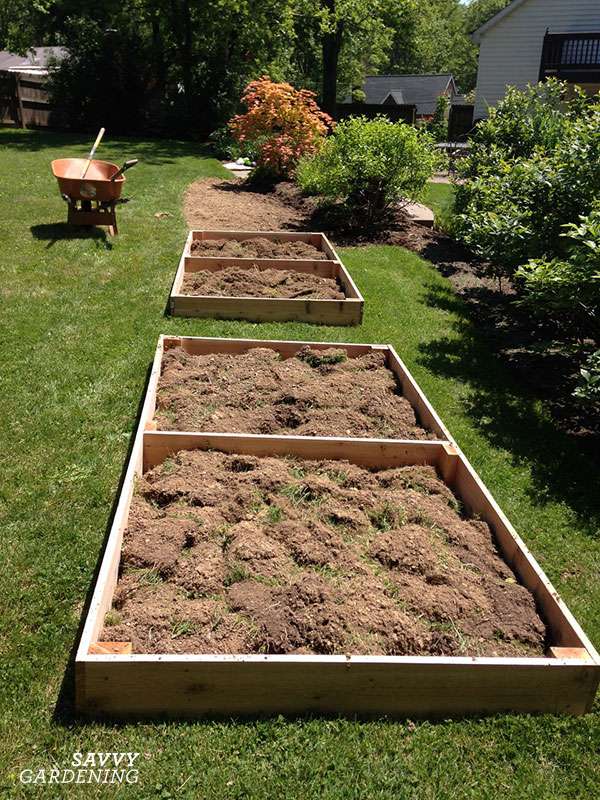
Testing and Preparing the Soil for Raised Bed Gardening
To ensure optimal plant growth and productivity, it is essential to test and prepare the soil before planting in your raised beds. By conducting a soil test and making necessary amendments, you can create an ideal growing environment for your plants.
Soil Testing and Analysis
Conducting a soil test helps identify the pH level of the soil, nutrient deficiencies, and other important parameters. You can either send a sample to a professional soil testing laboratory or use a home soil testing kit. Based on the test results, you can make informed decisions about the type and amount of soil amendments required.
pH Adjustment
The pH level of the soil greatly influences nutrient availability to plants. Most vegetables and flowers thrive in slightly acidic to neutral soil, with a pH range of 6.0 to 7.0. If your soil is too acidic or alkaline, you can adjust its pH by adding amendments such as lime to raise the pH or sulfur to lower it.
Amending the Soil with Necessary Nutrients
Based on the soil test results, you may need to amend your soil with specific nutrients to ensure optimal plant growth. Organic fertilizers, such as compost and well-rotted manure, are excellent choices for providing a rich source of nutrients. Additionally, you can use organic or synthetic fertilizers to supplement any deficiencies.
Proper Soil Aeration and Loosening
To create a healthy growing environment for your plants, it is important to ensure proper soil aeration and loosening. This can be achieved by adding organic matter, such as compost, and using tools like a garden fork or tiller to break up compacted soil. Loose soil allows roots to grow freely and ensures efficient nutrient uptake.
Controlling Weeds and Pests in Raised Bed Gardening
Weeds and pests can be a nuisance in any garden, including raised beds. However, with proper preventive measures and natural pest control methods, you can keep these unwanted intruders at bay.
Preventing Weed Growth in Raised Beds
To prevent weed growth in your raised beds, it is important to take preventive measures. Before planting, clear the area of any existing weeds or weed seeds. You can use a weed barrier or landscape fabric to create a physical barrier between the soil and the weeds. Additionally, regularly mulching your raised beds will help suppress weed growth.
Natural and Organic Pest Control Methods
In raised bed gardening, it is advisable to use natural and organic pest control methods to protect your plants. These include techniques such as companion planting, which involves planting beneficial companion plants that repel pests or attract beneficial insects. You can also use homemade pest sprays made from ingredients like neem oil, garlic, or hot pepper to deter pests.
Protecting Plants from Common Pests and Diseases
Regular monitoring and early detection are crucial in preventing and managing pests and diseases in raised beds. Inspect your plants regularly for signs of pest damage or disease, such as yellowing leaves, wilting, or strange spots. If necessary, remove affected plants and take appropriate measures, such as applying organic pest deterrents or disease-resistant varieties of plants.
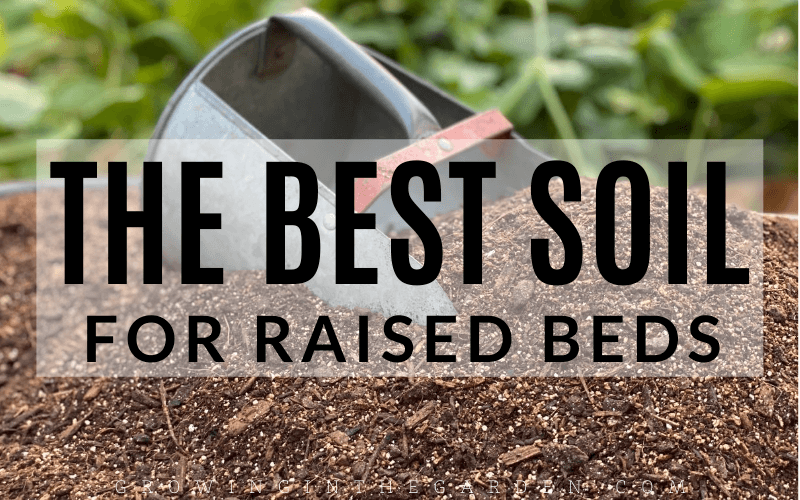
Irrigation and Water Management in Raised Bed Gardening
Proper irrigation and water management are essential for healthy plant growth and optimal yields in raised bed gardening. Providing the right amount of water at the right time ensures that your plants receive the necessary moisture without the risk of overwatering or underwatering.
Determining Watering Needs for Different Plants
Different plants have varying watering needs based on their species, growth stage, and environmental conditions. It is important to research the specific watering requirements of the plants you are growing in your raised beds. Factors like temperature, sunlight exposure, and soil moisture retention should be considered when determining watering frequency and duration.
Choosing the Right Irrigation System
Selecting the appropriate irrigation system for your raised beds depends on factors such as the garden size, plant density, and water availability. There are various options available, including drip irrigation, soaker hoses, and watering wands. Drip irrigation is particularly well-suited for raised bed gardening, as it delivers water directly to the root zone, minimizing evaporation and reducing weed growth.
Watering Techniques for Optimal Plant Growth
When watering your raised beds, it is important to use proper techniques to ensure optimal plant growth. Watering in the early morning or late afternoon allows for better water absorption and reduces the risk of fungal diseases. Watering deeply and infrequently promotes deeper root growth and helps plants become more resilient to drought conditions.
Maintenance and Care Tips for Raised Bed Gardening
To ensure the continued success of your raised bed gardens, regular maintenance and care are necessary. By following a few simple tips, you can keep your plants healthy and productive throughout the growing season.
Mulching to Retain Moisture
Mulching your raised beds is an effective way to retain soil moisture, suppress weed growth, and regulate soil temperature. Use organic mulch, such as straw, wood chips, or compost, to create a protective layer on the soil surface. This will help conserve water, reduce the need for frequent watering, and provide a habitat for beneficial organisms.
Regular Fertilization
To maintain healthy growth and productivity, it is important to provide your plants with regular fertilization. Organic fertilizers, such as compost or well-rotted manure, can be added on an ongoing basis to replenish nutrients in the soil. Additionally, foliar feeding with nutrient-rich solutions can provide a quick boost of nutrients to the plants.
Pruning and Trimming Plants
Pruning and trimming plants in your raised beds is necessary for maintaining shape, preventing overcrowding, and promoting airflow. Regularly remove dead or diseased plant material to reduce the risk of pests and diseases. Pruning can also help redirect the plant’s energy towards fruit production or new growth.
Monitoring and Adjusting Soil Conditions
Regularly monitor the soil conditions in your raised beds and make necessary adjustments. Check the moisture level with a finger test or by using a moisture meter. Adjust watering frequency and duration accordingly. Monitor the pH levels and nutrient deficiencies by observing plant health and conducting occasional soil tests. Making these adjustments will ensure optimal growing conditions for your plants.
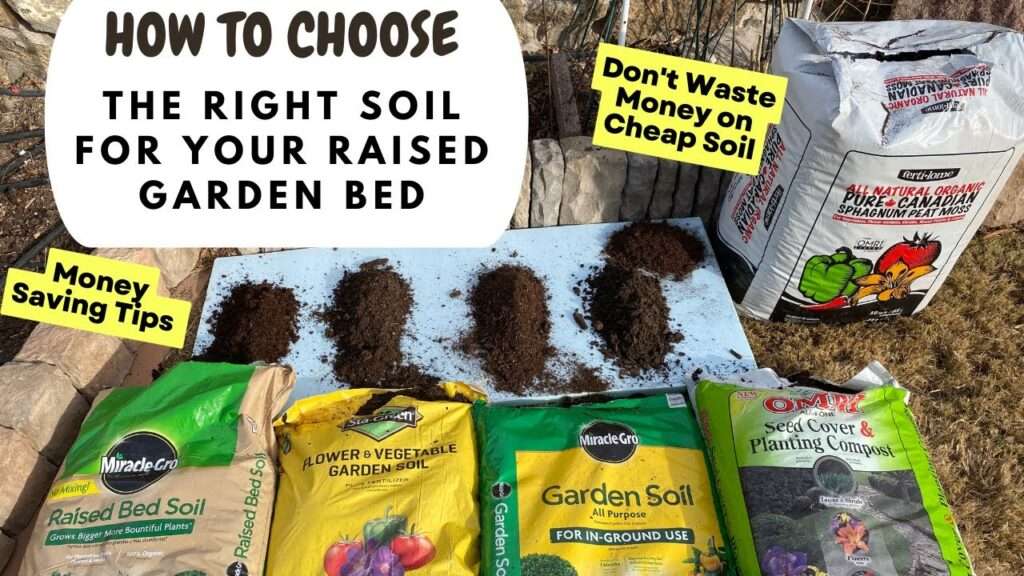
Harvesting and Crop Rotation in Raised Bed Gardening
Knowing when and how to harvest your crops is essential for reaping the rewards of your raised bed gardens. Additionally, implementing crop rotation practices helps maintain healthy soil and prevents the buildup of pests and diseases.
Knowing When to Harvest
Each plant has its own signs when it is ready for harvest. Pay attention to color, size, and texture changes in fruits, vegetables, or flowers. Follow the recommended maturity time provided on seed packets or plant labels. Harvesting at the right time ensures the best taste and quality.
Proper Techniques for Harvesting
To maximize yields and minimize damage, use proper techniques for harvesting your crops. Depending on the type of plant, you may need to use tools such as pruning shears or scissors to ensure a clean cut. Handle fruits and vegetables carefully to avoid bruising or breaking. Harvest herbs and flowers by cutting them just above a leaf node to promote new growth.
Planning Crop Rotation for Healthy Soil
Crop rotation involves changing the location of plants from one growing season to another. This practice helps prevent the buildup of pests and diseases that may affect specific plant families. Rotating crops also prevents nutrient depletion and promotes the overall health of the soil. Plan your crop rotation based on plant families and consider the specific needs and characteristics of each plant.
Raised Bed Gardening for Specific Plants
Raised bed gardening is suitable for a wide variety of plants, including herbs and spices, vegetables and fruits, as well as flowers and ornamental plants. Let’s take a closer look at some considerations for each category:
Herbs and Spices
Herbs and spices thrive in raised beds due to the control they provide over soil conditions. When growing herbs and spices, select soil that drains well and has slightly acidic to neutral pH. Place the taller herbs at the back or center of the bed, and the shorter ones towards the front, for ease of harvesting and better sunlight exposure.
Vegetables and Fruits
Growing vegetables and fruits in raised beds allows for better pest control, improved drainage, and easier weed management. Consider the specific needs of the plants you are growing, such as sunlight requirements, root depth, and spacing. Plan your raised beds accordingly to optimize the available space and promote healthy growth.
Flowers and Ornamental Plants
Raised bed gardening can also be used to create ornamental displays of flowers and plants. When selecting soil for flowers and ornamental plants, consider the specific requirements of each species, including soil texture, pH, and fertility. Use well-draining soil and ensure sufficient water and nutrient availability to promote vibrant blooms.
Tips for Successful Raised Bed Gardening
Here are some additional tips to help you succeed in raised bed gardening:
Proper Bed Construction
Ensure that your raised bed is well-constructed and sturdy to support the weight of the soil and the plants. Use materials such as rot-resistant wood, concrete blocks, or galvanized metal to create the bed. Avoid using treated lumber, as it may leach harmful chemicals into the soil.
Spacing and Companion Planting
Proper plant spacing allows for adequate airflow and prevents overcrowding, which can lead to pest and disease issues. Research the spacing requirements for the specific plants you are growing and plan accordingly. In addition, consider companion planting, which involves growing compatible plants together to enhance growth, repel pests, or attract beneficial insects.
Regular Soil Monitoring and Maintenance
Regularly monitor the soil conditions in your raised beds, including moisture levels, pH, and nutrient availability. Make adjustments as necessary to ensure optimal growing conditions. Maintain a schedule for adding organic matter, mulching, and additional fertilization to keep the soil fertile and healthy.
Avoiding Common Mistakes in Raised Bed Gardening
While raised bed gardening offers numerous benefits, there are some common mistakes to avoid to ensure success:
Overwatering
Overwatering is a common mistake in raised bed gardening. Understand the specific watering needs of your plants and avoid excessive watering, which can lead to root rot and other water-related issues. Proper drainage and careful monitoring of moisture levels will help avoid this mistake.
Using Poor Quality Soil
Using poor quality or contaminated soil can negatively impact plant growth and health. Invest in good quality soil or amend existing soil with organic matter and appropriate soil amendments. Conduct soil tests to understand the nutrient content and pH level of your soil, and make necessary improvements.
Not Providing Adequate Sunlight
Sunlight is essential for plant photosynthesis and overall growth. Before building your raised beds, choose a location that receives sufficient sunlight for the specific plants you are growing. Most vegetable and flowering plants require at least six hours of direct sunlight per day.
Ignoring Pest Control Measures
Neglecting pest control measures can result in damage to your plants and reduced yields. Take proactive measures to prevent pests, such as using physical barriers, companion planting, and regularly inspecting and addressing any signs of pests. Explore natural pest control methods before resorting to chemical options.
Benefits of Raised Bed Gardening
Raised bed gardening offers numerous benefits that make it a popular choice among gardeners. Some of these advantages include:
Improved Soil Drainage
Raised beds provide better soil drainage, preventing waterlogging and root rot. The elevated position allows excess water to drain away quickly, ensuring that plants have access to oxygen and preventing water-related issues.
Efficient Use of Garden Space
With raised beds, you can maximize your garden space by growing more plants in a compact area. The raised structure allows you to cultivate plants closer together while still providing adequate spacing for healthy growth. This is particularly beneficial for small gardens or urban spaces.
Prevention of Soil Compaction
Raised beds help prevent soil compaction, which can lead to poor root development and hinder nutrient uptake. The loose soil structure in raised beds allows roots to access nutrients and water more easily, resulting in healthier plants.
Reduced Weed Growth
By creating a contained growing area, raised beds make it easier to control weed growth. Properly constructed beds with a weed barrier and regular mulching help suppress the growth of weeds, reducing competition for nutrients and space.
Conclusion
Choosing the right soil is crucial for successful raised bed gardening. By considering various factors such as climate, plant requirements, drainage, and nutrient needs, you can select the most suitable soil for your raised beds. Incorporating organic matter, conducting soil tests, and following proper maintenance practices will optimize plant growth and ensure a fruitful harvest. With the right soil and proper care, your raised bed gardens will flourish, providing you with a bountiful and thriving garden. So start planning your raised bed garden today and enjoy the numerous benefits it brings to your gardening experience. Happy gardening!

